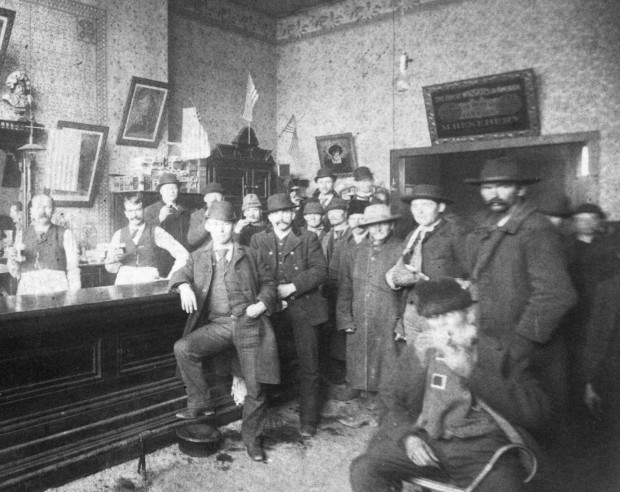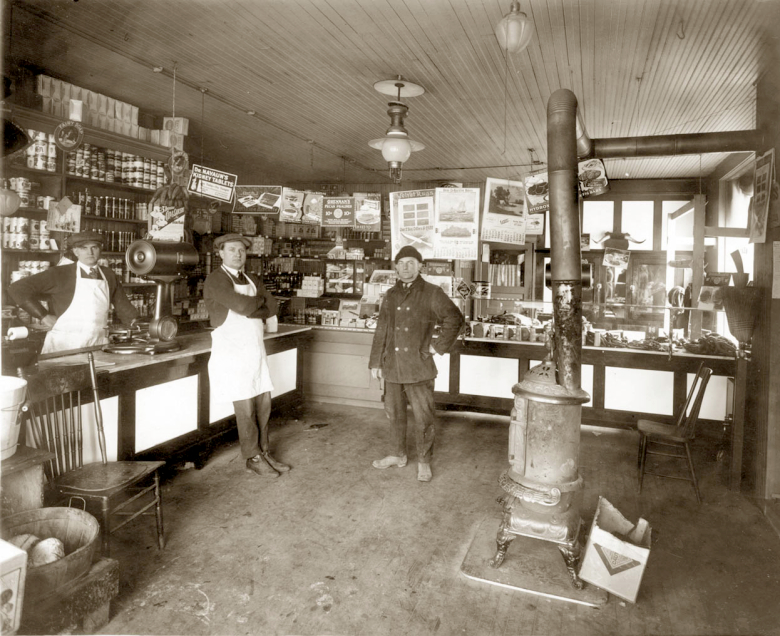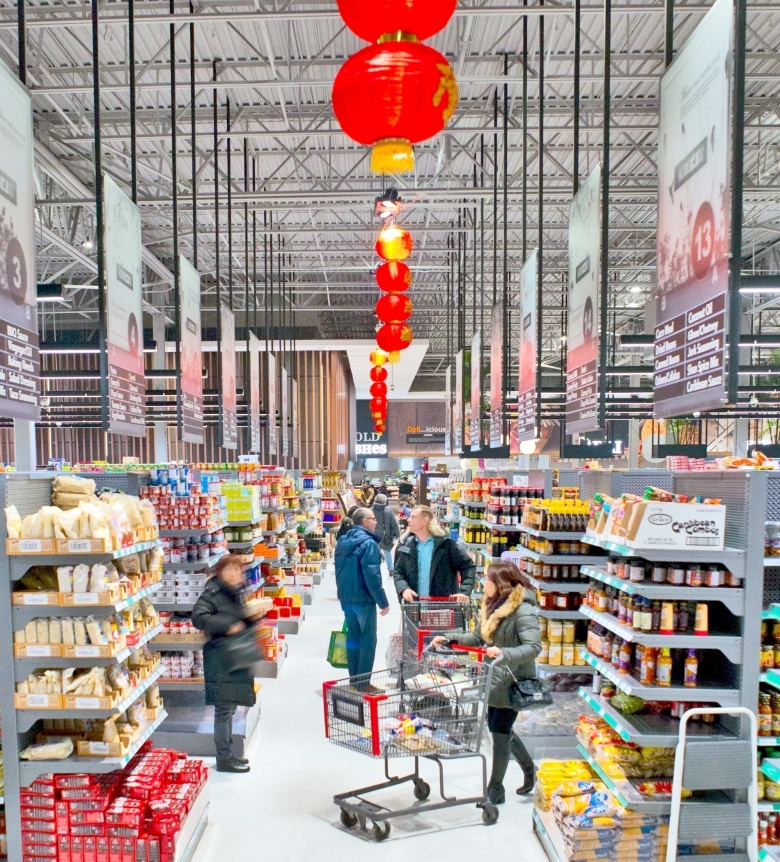Since the end of the 17th century the term "Grocery" meant a drinking
establishment such as a tavern or saloon, until about the 1850s. It's
not the kind of grocery we know today, those were called a "General
Store" back in the day.

The General Store.
Today's specialized stores offer a great variety of merchandise for the
convenience of their customers, but in the 1800s, merchants simply sold
the items they could obtain and resell.
These general stores, mercantile's, or emporiums, served rural
populations of small towns and villages, and the farmers and ranchers in
the surrounding areas. They offered a place where people could find food
and necessities that would have otherwise been difficult to obtain.
In addition to merchandise, a general store offered a meeting place for
isolated people to socialize and do business. Many of these stores also
doubled as a post office.

ANOTHER TOWN MEETING?
During the first part of the 19th century, these
stores stocked necessities, but as the economy prospered after the Civil
War, more and more luxury items found their way onto the shelves. The
storekeepers purchased merchandise from "drummers" (salesmen) who
represented large wholesale houses and manufacturers located in larger
cities and port towns.
At first, only locally produced perishable goods were sold in the
general store; but with the expansion of the railroads, the advent of
mass production, and technological advances such as the refrigerated
boxcar, the local shopkeeper could display goods from all over the
country.
When money was scarce, the shopkeeper might extend credit to a regular
customer, or accept payment in kind (bartering).
What was a General Store like in the 19th Century?
Certainly not anything approaching the modern grocery or department
store. Most stores had at least one large display window, but inside
they were still dark and gloomy -- and depending on their geographical
location, probably damp and humid to boot. Most were crowded with
shelving along every wall. The floors were also crammed with boxes,
barrels, crates, and tables holding goods.

The front counter held display cases for smaller
items, as well as needed machinery such as a coffee grinder, scales for
weighing merchandise, and a cash register. Surplus merchandise was
stored in the cellar or basement, or possibly on the second floor (if
that was not the living quarters of the grocer's family).
Most of the items to be found in a general store would be familiar to us
today. Food and consumables included coffee beans, spices, baking
powder, oatmeal, flour, sugar, tropical fruit, hard candy, eggs, milk,
butter, fruit and vegetables, honey and molasses, crackers, cheese,
syrup and dried beans, cigars and tobacco.

The apothecary section of the store, as in a
modern grocery or department store, was well represented with a large
number of patent medicines, remedies, soaps and toiletries and elixirs.
The major difference between many of these items and modern ones is that
none of them were tested to see if they actually worked! Most patent
remedies of the era were alcohol based, which explained their popularity
in many cases.
The dry goods section of the store included bolts of cloth, pins and
needles, thread, ribbon, silk, buttons, collars, undergarments,
suspenders, dungarees, hats and shoes. Essential items such as rifles,
pistols, ammunition, lanterns, lamps, rope, crockery, pots and pans,
cooking utensils and dishes, farm and milking equipment and sometimes
even coffins could be found inside a general mercantile!
The average store would have been considered none too clean from modern
standards. The roads outside were unpaved and unwashed; the dirt tracked
in by customers would have included animal waste (and possibly human if
someone had emptied their chamber pot into one of the streets). The cast
iron stove heating the store during cold weather produced soot which
settled over much of the merchandise. And it was not unheard of to
discover rodents foraging about inside the store.

TODAY'S SUPER SIZED
GROCERY MARKET. "PRICE CHECK IN AISLE 93."
Compiled by Neil Gale, Ph.D.
|




